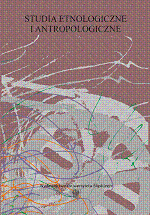Transformacja przestrzeni publicznej współczesnego miasta — na przykładzie mysłowickiego centrum
A transformation of the public space of the contemporary city on the basis of the centre in Mysłowice
Author(s): Grzegorz OdojSubject(s): Anthropology
Published by: Wydawnictwo Uniwersytetu Śląskiego
Summary/Abstract: The majority of aspects of the urban life concentrate in the public space, clearly separated from private spaces. The nature of the public space consists in the fact that it constitutes a joint urban space in the social sense, comprising different functions and meanings. It also constitutes the area where basically all inhabitants can feel free. The public space is a space of identity which makes it possible for the next generations of inhabitants to identify with the city. It makes the mutual communication and expression of people easier. It is a stage on which the mystery play of human life is played every day. In the public space, it is not only the past or the present that is coded, but also the new phe¬nomena reflecting deep transformations sometimes in the humanistic dimension of the urban space. A traditional space is the centre of the city, the most significant element and basic form of which is a centrally situated market — the market square — essential for the existence of both an individual and given social groups. Currently, shopping malls and hypermarkets are more often becoming a substitute of the public space. However, they are not a public space, but a private area only publically used. As long as the pub¬lic space is the sphere of freedom, it is the private space that usually undergoes numerous restrictions, control and social selection. Shopping malls usurp the right to “be the centre”, are a simulation of “the city in the city”. This way, they turn away a cultural code of the urban area — a traditional centre stops to exist or is the one only by name whereas the outskirts become “the centre”. In other words — a social life moves into the outskirts of the city. Such a situation is observed in Mysłowice — the city which was the subject of observations and inquiries. The opening of the Real hypermarket seven years ago has decreased the attractiveness of the city centre, especially the square market, as a trade, service, recreational or even cultural space. Real made, so to speak, an important reevaluation of an urban space of Mysłowice, decomposing its functional and symbolic dimension and determining human relations and behaviors in a direct way.
Journal: Studia Etnologiczne i Antropologiczne
- Issue Year: 2010
- Issue No: 10
- Page Range: 87-99
- Page Count: 13
- Language: Polish

